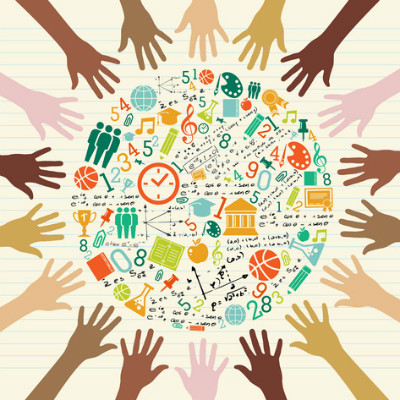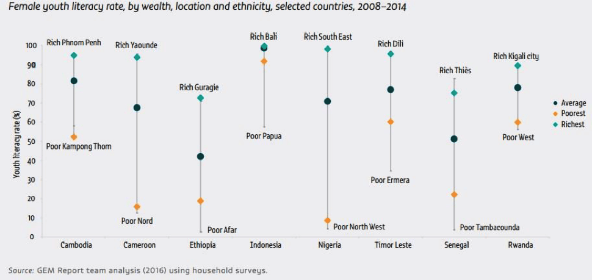Today, examples of rapid, non-linear progress—sometimes called leapfrogging—are evident in a number of sectors. Often, these instances are most obvious in the developing world, where in telecommunications or banking, for example, whole phases of infrastructure and institution-building that other countries had to go through have been by-passed by nations that got a later start down that road. Many African countries never systematically invested in laying phone lines, yet today access to cell phone service on the continent has grown so rapidly that in many cases communities are more likely to be connected to the outside world via cell phone service than to have access to electricity or running water. Likewise for banking: Instead of focusing on expanding physical branches to reach the many communities and families who lack access, people across the developing world are relying on mobile money—transfers and payments via text message—which grew out of innovations in Kenya.
Could this type of non-linear progress happen in education? New data demonstrates that there has never before been a more urgent need for it. At the current rates of educational progress, by 2030 half of all the world’s youth in low- and middle-income countries—more than 800 million young people—will lack the basic high-school-level skills needed for work and life. This trend is especially worrisome at a time when developing countries need to rely less on natural resources and more on educated populations to create economic growth. Current calculations forecast that half of the world’s jobs—over 2 billion—are at risk of being lost to automation in the coming decades.
Deep Inequality and Insufficient Skills

Inequality in educational opportunity is at the heart of the impending skills deficit. If you are born in the “developing world” (most of Asia, Latin America, Africa, and parts of the Middle East), the probability that you will get a high-quality education is much lower than if you are born in the “developed world” (Europe, Japan, and English-speaking North America and Oceania). In a recent analysis, I argue that there is essentially a 100-year gap in educational levels between the two groups. Across Africa, only about one-third of young people make it to secondary school—the percentage of American youth who attended secondary school more than 100 years ago. On basic literacy and numeracy measures, the average student in the developing world scores on par with the lowest 8 percent of students in the developed world, by one estimate. And what is perhaps worse, at the current pace of change, it will take more than 100 years for developing world students to catch up.
A main reason for this gap is inequality within developing countries. Girls and boys of the elite and well-to-do across the developing world usually get a good education, but a large percentage of children are often left out, including many who are from poor families, live in rural areas, are part of ethnic linguistic minorities, and/or come from communities with limited traditions of educating girls, among other factors. The chart below from UNESCO’s Global Education Monitoring report demonstrates how wealth, location, and ethnicity determine very different educational fates for girls across selected countries in Africa and Asia.
Ultimately, if education is to make a leap forward, it will need to do so with the most marginalized children in mind.

These education and learning gaps are unacceptable, and such wide disparities should motivate urgent action from many actors. However, we also need to ask: Is it enough to bring all poor children up to the levels that rich children are achieving today? Are the academic skills most young people are obtaining in the developed world sufficient in a world of constant change?
The short answer is no. Rapid increases in technology, changes to the world of work, and other complex global challenges demand that every child acquire a breadth of skills including not just literacy and numeracy but also competencies such as creative problem-solving, communication, and flexibility. There is a robust debate about how well schools, even in the developed world, are equipping students with these skills.
A Path Forward
If we could build our education systems from scratch today, they would likely look very different. They would provide a variety of experiences for learning, including outside the four walls of a traditional school, give young people more control over what and how they learn, and encourage them to work together to apply what they know to problems in the real world. Many skills and competencies cannot be taught as standalone curricular areas and assessed in the way schools usually test subject-matter content. Instead, they call for a different approach altogether.
Deep educational inequalities and this need for a new approach have motivated us at the Center for Universal Education to look to the possibility of non-linear progress in education. How can we leap forward so that all children—rich and poor alike—can develop the breadth of skills needed to succeed in life and contribute to vibrant societies?
Building off of previous research, such as work done at the Leapfrog Initiatives at the University of Minnesota and in innovation theory, we have collected and analyzed more than 800 education innovations, with plans to include more than 2,000 in the coming months. By “innovations,” we mean projects, programs, and tools that the many groups working in this field consider to offer something different and promising—not necessarily brand new ideas, but ones that break from current practice in education systems. Our catalog of innovations provides insight into how theory is currently playing out on the ground in more than 100 countries all over the globe, in locations from Northern California cities to the Amazon jungle to rural India and everywhere in between. We have learned that a wide range of actors are involved in these innovations, including government officials, teachers, students, and NGO leaders, as well as people from outside the sector such as artists, architects, engineers, social entrepreneurs, and business leaders.
From our initial research, any leap forward in the education ecosystem will need to include shifts in at least three major areas:
1. The teaching and learning process. What are new ways and places children can learn (in and out of school), how can we support teachers in helping kids develop a breadth of skills, and how can we engage students more with their own learning?
A promising innovation in this area is Learner Guides, a program of Camfed, an NGO that supports girls’ secondary education in Zimbabwe, Tanzania, Ghana, Zambia, and Malawi. The program's "guides" are recent young women alumni of Camfed’s secondary school programs who return to classrooms in their rural communities to help teach a curriculum around life skills such as resilience and goal-setting. Using workbooks, they facilitate peer-to-peer learning among the students, a model that promotes collaboration and puts the student at the center of the learning process. The approach supplements the current formal education system, helps unburden teachers, and broadens the education workforce. The additional skills young people learn through the curriculum and the self-directed learning style give them important support for their future studies and careers, and the guides provide psycho-social support for students and serve as positive role models. The program is highly scalable, and already nearly 4,000 learner guides have helped teach more than 120,000 secondary students.
2. Methods for tracking and recognizing student learning. What are new ways to use continuous assessment to track children’s learning across a range of skills and competencies, to determine student progression across education levels dependent on demonstration of competence, and to recognize young people’s skills and qualifications in new ways that go beyond a diploma, such as employer- or community-based schemes to acknowledge what young people know and can do?
An innovation that is particularly compelling in this dimension is Colegio Fontán in Colombia. This private school promotes self-education, meaning students manage their own educational process. Moving away from a linear progression model, in which students move forward based on time and age, the school encourages students to work at their own pace and progress based on their learning levels and competencies. There are no standardized lesson plans, classrooms, pre-determined school years, or traditional teachers. The model is individualized so that students can study alone or in groups, with teachers serving as tutors to facilitate the progression of student learning. Developed in the 1950s, the teaching system was approved by the Ministry of Education in 1985. More than thirty other schools have since adopted the model.
3. Technology and tools. How can we use advancements in digital technology, especially to help the reach, efficiency, and creativity of learning opportunities for the most marginalized, as well as for other purposes such as community and parent participation and partnerships?
Among many other advantages, new technologies can help personalize learning while more seamlessly collecting data on student attendance and performance in real time. Children in Kenya struggle with numeracy skills, and nearly one third of 4th- and 5th-graders fail to pass 2nd-grade math proficiency tests, a figure that has not improved over three years of testing. To help improve numeracy in rural areas, Kenya’s Ministry of Education has introduced iMlango, an electronic mathematics learning and data collection portal that adapts to the learning level of individual students, while simultaneously monitoring student attendance and progress. Students use animated lessons, numerical exercises, word problems, and games to improve their mathematical ability. Teachers can then see the individual- and class-level progress on different topics and better tailor their instruction. This project, which currently serves 150,000 children in 195 schools, is a partnership between the Ministry of Education, the United Kingdom’s Department for International Development, and private sector companies Avanti Communications, Math-Whizz, and sQuid.
It is clear that any path toward “leapfrogging” education will put marginalized children at the center and encourage all kids to develop a broader set of skills. The wide range of innovations we are now seeing within and outside of education systems gives hope about the potential to fulfill this goal.
Support SSIR’s coverage of cross-sector solutions to global challenges.
Help us further the reach of innovative ideas. Donate today.
Read more stories by Rebecca Winthrop.

